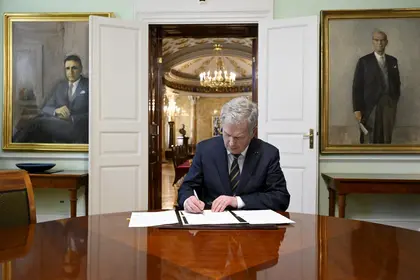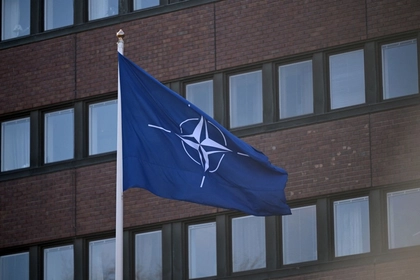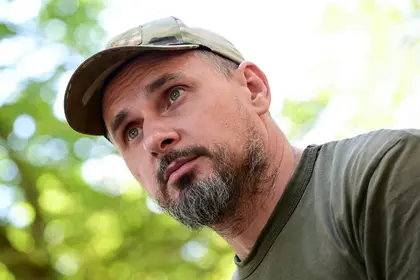In a historic and consequential development, Turkey last night became the final member of NATO to ratify Finland’s membership in the military alliance, paving the way for the Finns to finalize their membership in the coming days.
NATO chief Jens Stoltenberg welcomed the ratification, saying on Twitter it would “make the whole NATO family stronger and safer.”
JOIN US ON TELEGRAM
Follow our coverage of the war on the @Kyivpost_official.
I welcome the vote of the Grand National Assembly of #Türkiye to complete the ratification of #Finland’s accession. This will make the whole #NATO family stronger & safer.
— Jens Stoltenberg (@jensstoltenberg) March 30, 2023
After decades of staying out of military alliances, Finland and neighboring Sweden announced bids to join NATO in the wake of Russia’s invasion of Ukraine last year.
Here are five things to know about the two countries’ membership bids:
For decades, most Swedes and Finns were in favor of maintaining their policies of military non-alignment. But Russia’s invasion of Ukraine last year sparked sharp U-turns. The change was especially dramatic in Finland, which shares a 1,300-kilometer (800-mile) border with Russia.
Prior to the application, public support for NATO membership had remained steady at between 20 and 30 percent for two decades, but a February poll suggested 82 percent were happy with the decision to join the alliance, AFP reports.
A Swedish poll in January had 63 percent of Swedes in favor of joining the bloc. During the Cold War, Finland remained neutral in exchange for assurances from Moscow that it would not invade.
After the fall of the Iron Curtain, Finland remained militarily non-aligned. Sweden adopted an official policy of neutrality at the end of the 19th-century Napoleonic wars, which was amended to one of military non-alignment following the end of the Cold War.

UK Leads Crimean Air Reconnaissance Operations Against Russian Air Defenses
Split entry
The Nordic neighbors were originally adamant that they wanted to join the alliance together, agreeing to submit their applications at the same time. Despite assurances they would be welcomed with “open arms,” their applications quickly ran into opposition, primarily from NATO member Turkey.
Bids to join NATO must be ratified by all members of the alliance. Turkish President Recep Tayyip Erdogan in mid-March asked parliament to ratify Finland’s bid, but delayed Sweden’s following a litany of disputes.
Similarly, when Hungary ratified Finland’s bid on March 27, Sweden’s was postponed until “later.” Finland decided to move forward, even if it meant leaving Sweden behind. Since Finland’s parliament has already approved the application, all it needs to do now that all ratifications have been secured is deposit an “instrument of accession” in Washington to finalize the membership.
Sweden vs. Turkey
Sweden, Finland and Turkey signed a trilateral memorandum at a NATO summit in June last year to secure the start of the accession process. But Ankara has repeatedly butted heads with Stockholm, saying its demands have remained unfulfilled, particularly for the extradition of Turkish citizens that Turkey wants to prosecute for “terrorism.”
It has accused Sweden of providing a safe haven for “terrorists,” specifically members of the Kurdistan Workers’ Party (PKK). Negotiations between the countries were temporarily suspended in early 2023, after protests – involving both the burning of the Koran and a mock hanging of an effigy of Erdogan – were staged in Stockholm. Later Swedish media discovered that the Koran burning was organized by a journalist with Kremlin links.
Militaries
Swedish policy long dictated that the country needed a strong military to protect its neutrality. But after the Cold War, it drastically slashed defense spending, turning its military focus toward peacekeeping operations. Combining its different branches, the Swedish military can field some 50,000 soldiers, about half of whom are reservists.
While Finland has similarly made defense cuts, it has maintained a much larger army than Sweden. The country of 5.5 million people has a wartime strength of 280,000 troops plus 600,000 reservists.
After Russia invaded Ukraine, both countries announced increased spending. Sweden said it was targeting 2 percent of GDP “as soon as possible,” and Finland added more than €2 billion ($2.1 billion) to its €5.1 billion defense budget over the next four years.
Memories of war
While Sweden has sent forces to international peacekeeping missions, it has not gone to war for over 200 years. Finland’s memories of warfare are much fresher. In 1939, it was invaded by the Soviet Union. The Finns put up a fierce fight during the bloody Winter War, but the country was ultimately forced to cede a huge stretch of its eastern Karelia province in a peace treaty with Moscow.
A 1948 “friendship agreement” saw the Soviets agree not to invade again, as long as Finland stayed out of any Western defense cooperation. Indeed, the term “Finlandization” was coined to describe a country’s forced neutrality to appease its stronger neighbor, and many political scientists – most notably former U.S. Secretary of State Henry Kissinger – had been calling for Ukraine’s Finlandization. But that possibility, too, thanks to Russia’s full-scale invasion, has been relegated to the dustbin of history.
You can also highlight the text and press Ctrl + Enter






